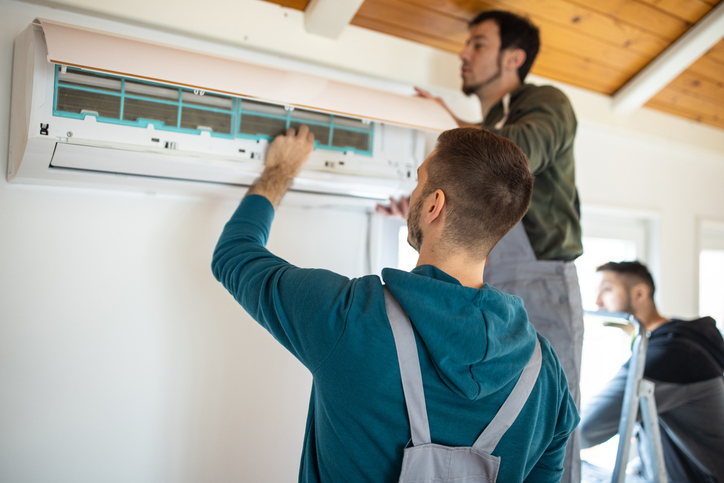Introduction
Installing an AC system is a significant home improvement investment, and understanding the associated costs is essential for planning your budget effectively. As we enter 2025, the cost of installing an AC unit can vary significantly depending on several factors, including the type of system, the size of the home, installation complexity, and regional differences. Whether you’re replacing an old unit or installing a new one in a home without air conditioning, knowing the pricing landscape can help you make an informed decision. In this guide, we will break down the costs associated with AC installation, highlighting key factors that influence the price and offering insights into the typical expenses you can expect in 2025.
1. Types of AC Systems:
The type of AC system you choose plays a significant role in determining the installation cost. Central air systems are typically the most expensive to install due to their complexity, as they require extensive ductwork and additional components, such as a furnace or heat pump. On the other hand, ductless mini-split systems tend to be more affordable, especially for homes without existing ductwork. While central air systems can range from $3,000 to $7,000, ductless systems usually cost between $2,000 and $5,000 per unit. Window units and portable ACs are generally less expensive, ranging from $150 to $1,000, but they do not offer the same level of comfort or efficiency as more permanent solutions. The initial choice of system will largely determine your overall installation costs.
2. Size of the Home:
The size of your home is one of the primary factors affecting the cost of AC installation. Larger homes require more powerful AC units or multiple units to provide adequate cooling. The square footage of your home influences the cooling capacity needed, which is measured in tons (one ton of cooling is equal to 12,000 BTUs per hour). For a standard-sized home (1,500-2,000 square feet), an AC unit with a capacity of 2.5 to 3 tons is typically required. Larger homes may need a 4-ton or higher unit, which will increase the overall cost. Additionally, if your home is not pre-equipped with ductwork, the installation costs will rise as new ductwork will need to be installed to accommodate the larger system. For homes around 2,000 square feet, expect costs to range from $4,000 to $7,000.
3. Location and Region:
The region where you live can significantly impact the cost of AC installation due to differences in labor rates, local regulations, and demand for cooling systems. In areas with high demand for air conditioning, such as hot and humid climates, installation costs may be higher due to the increased workload of HVAC contractors. Additionally, labor costs can vary depending on the cost of living in your area. For example, cities like New York, San Francisco, or Los Angeles typically have higher installation costs compared to smaller towns or rural areas. On average, homeowners in the United States can expect to pay between $3,500 and $7,500 for a standard installation, although this cost may be higher in specific locations. Always check local rates before finalizing any installation contracts to ensure you receive the best possible price.
4. Complexity of Installation:
The complexity of the installation process also impacts the overall cost. If your home already has ductwork and a compatible electrical system in place, the installation process will be quicker and more affordable. However, if your home lacks the necessary infrastructure, such as ductwork, additional costs will be incurred for modifications or new installations. Ductless systems can be more straightforward and less expensive to install in homes without existing ductwork. However, if the installation requires substantial modifications or if there are accessibility issues (such as limited space for placing an outdoor unit or wiring problems), the cost can increase. Contractors may need to spend more time or use additional materials to complete the job, resulting in higher labor costs.
5. AC Unit Brand and Efficiency:
The brand and efficiency of the AC unit you choose will also affect the installation cost. Premium brands with higher energy efficiency ratings, such as Trane, Carrier, or Lennox, can come with higher upfront costs, but they may provide long-term savings through lower energy consumption. High-efficiency units with SEER (Seasonal Energy Efficiency Ratio) ratings above 16 or 18 may cost more to install, but they offer better energy savings and are often eligible for rebates or tax incentives. On the other hand, budget-friendly models from lesser-known brands may have lower installation costs but may not perform as efficiently, resulting in higher utility bills over time. For energy-efficient models, installation prices may range from $4,500 to $8,000, depending on the specific model and system features.
6. Permits and Inspection Fees:
In many areas, installing a new AC system requires permits, and the associated costs can be an unexpected part of the overall installation price. Depending on local building codes, your contractor may be required to submit paperwork for approval before the installation can commence. Additionally, you may need to have the installation inspected to ensure that it complies with safety standards and regulations. Permitting fees can vary widely based on location, with some municipalities charging between $100 and $500 for installation permits. Always inquire about these additional costs when obtaining quotes from contractors to ensure that you are prepared for the full scope of expenses.
7. Labor Costs:
Labor is a significant portion of the overall cost when installing a new AC system. The cost of labor depends on the complexity of the installation, the contractor’s experience, and your location. Generally, HVAC professionals charge hourly rates that range from $50 to $150 per hour, depending on the region and the contractor’s level of expertise. Simple installations may take a few hours, while more complex projects, such as installing ductwork or electrical systems, may take longer. It’s essential to obtain detailed quotes from contractors before proceeding with the installation to ensure that there are no hidden labor costs.
8. Additional Costs and Upgrades:
While the core installation cost covers the AC unit and basic installation, additional costs may be incurred for upgrades or added features. For example, you may choose to install a programmable thermostat, a zoning system, or a smart home integration system to enhance the efficiency and functionality of your new AC. These upgrades come with additional costs, ranging from $200 to $1,000 or more, depending on the features you choose. Other potential costs include duct sealing or insulation to improve efficiency, which may add $200 to $500 to the total price. Be sure to discuss any additional features with your contractor to get an accurate estimate for the final installation price.
The cost of installing an AC system in 2025 varies significantly depending on factors like the type of system, the size of your home, the complexity of the installation, and your location. On average, homeowners can expect to pay between $3,500 and $7,500 for a standard AC installation, with premium models and more complex installations increasing prices further. By understanding the various factors that influence installation costs, you can make an informed decision and plan your budget accordingly. Always obtain multiple quotes from licensed contractors and consider any additional costs, such as permits or upgrades, to ensure you get the best value for your investment.
Conclusion
Are you ready to install your new AC unit? Contact us at R&R Mechanical Services at (616) 452-6888 for a free consultation and estimate to help you find the best cooling solution for your home and budget.



